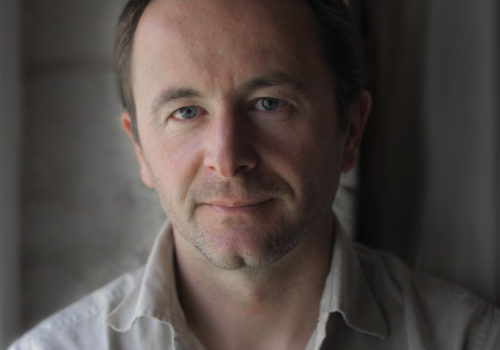The French photographer and visual artist Laurent Millet was born in 1968. He lives in La Rochelle and teaches at the art school in Angers. He is currently the subject of an exhibition at the Galerie Particulière in Paris, a retrospective at the Musée des Beaux-Arts d’Angers, and a catalogue published by Filigranes. We spoke with Millet before the opening of his show at the Galerie Particulière.
Anne-Claire Meffre: Can you explain how you came to your practice of building things and then photographing yourself with them?
Laurent Millet: Building things comes from the desire to inscribe myself personally into a landscape or a given space. This gives me a more intense existence, a raison d’être. When I was starting out, I read Gaston Bachelard’s Poetics of Space where he discusses the concept of refuge. I felt like I had to take refuge in something that was comforting and reassuring in my work. This idea brought me back to what I did child as a child in the countryside when I would play with wood and stones. I rediscovered that pleasure as an adult, with my professional training and taste for photography. Starting with the first things I built, fishing machines, I felt like a world was opening up in which I could really exist. These objects are powered by my personal fictions, my dream of another life. The photograph is proof of that, a record of the moment, a reward.
How has your practiced evolved?
LM: Over time, two major groups have emerged. One includes all my work in nature. I create objects related to hunting and fishing, as in Petites Machines Littorales (1997) or Les Cabanes (2000), with a dreamlife of activity in nature. I use the landscape for its ability to become almost neutral and vertical, like a page on which the structure will be read. The other major group includes my experiments in enclosed spaces, often white, where small objects become a kind of outlined improvisation or, with the series Translucent Mould of Me (2013), self-portraits that tilt the balance of this architectural space into another indistinct, almost flat, space.
Your work is filled with more or less explicit references. Can you tell us more about your inspirations?
LM: They come from my readings, artistic references, my own observations. It’s a mix, really. In the case of Derniers jours d’Emmanuel Kant (2009), I read the book while I was already shooting the pictures. It allowed me to find the words for a feeling. I saw myself in the work. It comforted me in my approach.
The exhibition at the Beaux-Arts d’Angers is the first retrospective of your work.
LM: Angers is an incomplete retrospective. For me, it was important to have a kind of visible throughline. That was how we selected the photographs. For this exhibition, I felt something I’d never experienced before: seeing the images physically together, both in the space and in the catalogue, which really is retrospective.
Read the full article on the French version of L’Oeil.
















